A flame leaps, coals burn
Intentions are set as smoke
dances towards the sky
Burning aromatic herbs and resins is a tradition you can find all over the world through countless generations. Besides simply smelling good, incense is used in ceremonies, for healing, and for cleansing an area.
I didn’t grow up in a culture or family that used incense, but I began burning incense when I was a teenager. It was a part of the belly dancing tradition I was a part of as well as a common presence in the East-West bookstores I loved to wander in. Back then, I loved the incense Nag Champa. Smelling it now instantly brings me back to that era.
As years went on, I graduated to more sophisticated resins like copal and frankincense. Later in life, when I attended wilderness schools, I started using various sages as they were commonly burned within those circles.
Botanicals for Incense
In recent years, I’ve become increasingly aware of the challenges these popular incense botanicals are facing. Drought, loss of habitat, and increased demand has devastated many of these plant populations.
Speaking of the pressures the frankincense tree is facing today, Ahmed Ibrahim Awale, president of the Somaliland Biodiversity Foundation, said in an interview, ”Frankincense has been harvested in a sustainable manner for [many] years but the rise in the global demand has completely changed it.”
Copal, frankincense, myrrh, and sandalwood are popular both for their rich aromatics but also because they’ve been mass marketed, somehow giving the impression that these are the only, or even the best, herbs and resins to use. This simply isn’t true!
Using Local Plants
Chances are there are many common plants that grow near you that are rich in aromatics and are perfect for incense! Using aromatic plants that you have a direct relationship with is an empowering way to enjoy the gifts of plants in your life. It also gives you the opportunity to participate in each step of the process, ensuring your incense botanicals were harvested sustainably and with good intentions.
Would you like to learn how to make incense? Instead of yet another article focusing on endangered and mass-marketed incense botanicals, the recipes below will show you how to make incense using commonly found or grown botanicals in temperate regions.
The Basics of How to Make Incense
You can make cone incense with three materials:
- Aromatic botanical powders
- A botanical gum, demulcent, or other substance to glue the powders together
- Water
For the following recipes, I used a variety of different aromatic botanical powders combined with marshmallow root powder (Althaea officinalis) as the substance to hold it all together.
Garden Incense
Inspired by plants that I grew and harvested in my garden, this blend combines the sweet smell of lemongrass with the spicy aromatics of rosemary and lavender.
What you’ll need…
- 1 tablespoon lemongrass powder (Cymbopogon citratus)
- 1 1/2 teaspoons rosemary powder (Salvia rosmarinus)
- 1 1/2 teaspoons lavender powder (Lavandula angustifolia)
- 1 teaspoon marshmallow root powder (Althaea officinalis)
- Approximately 1 tablespoon water
- Stir the powders together until they are completely combined.
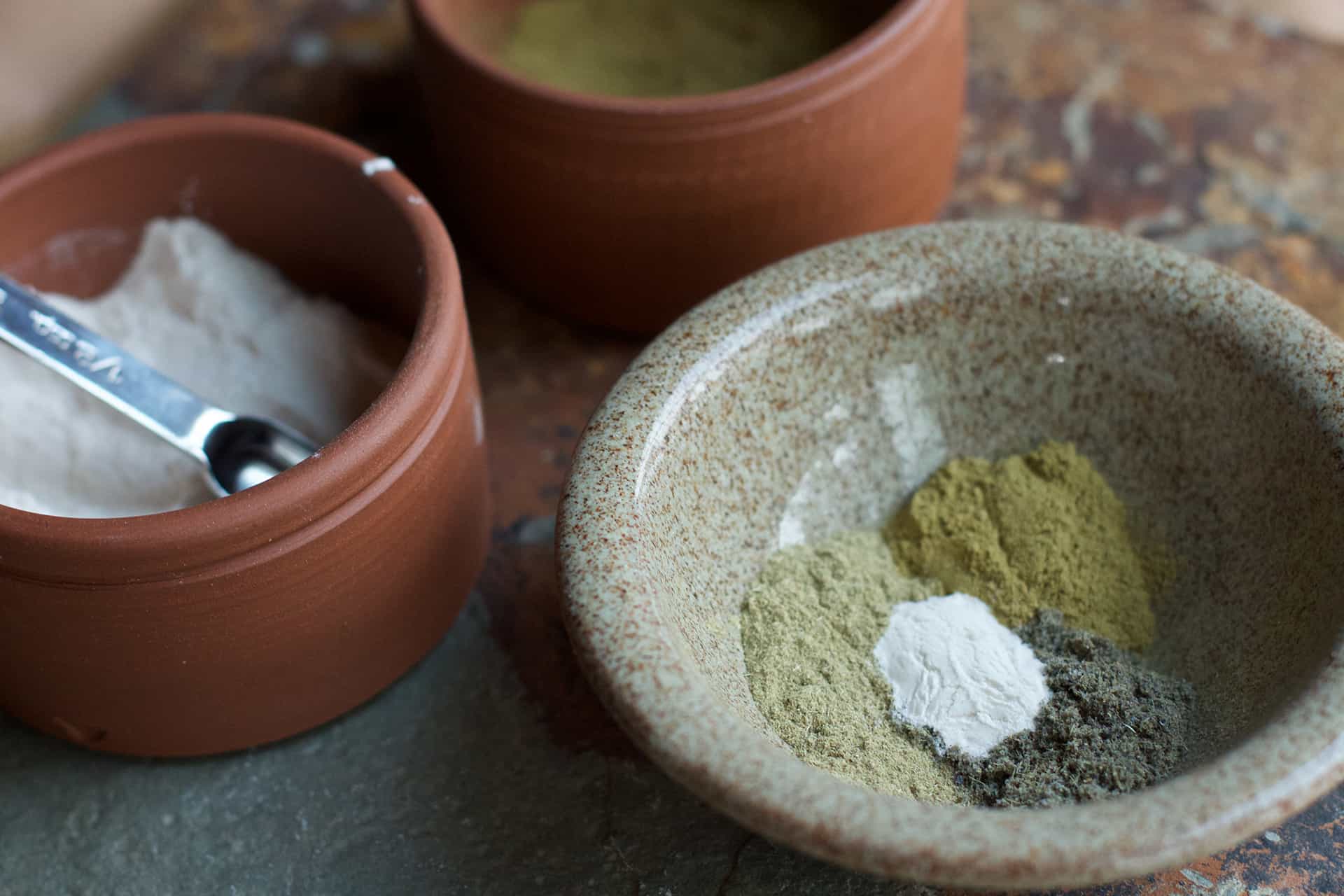
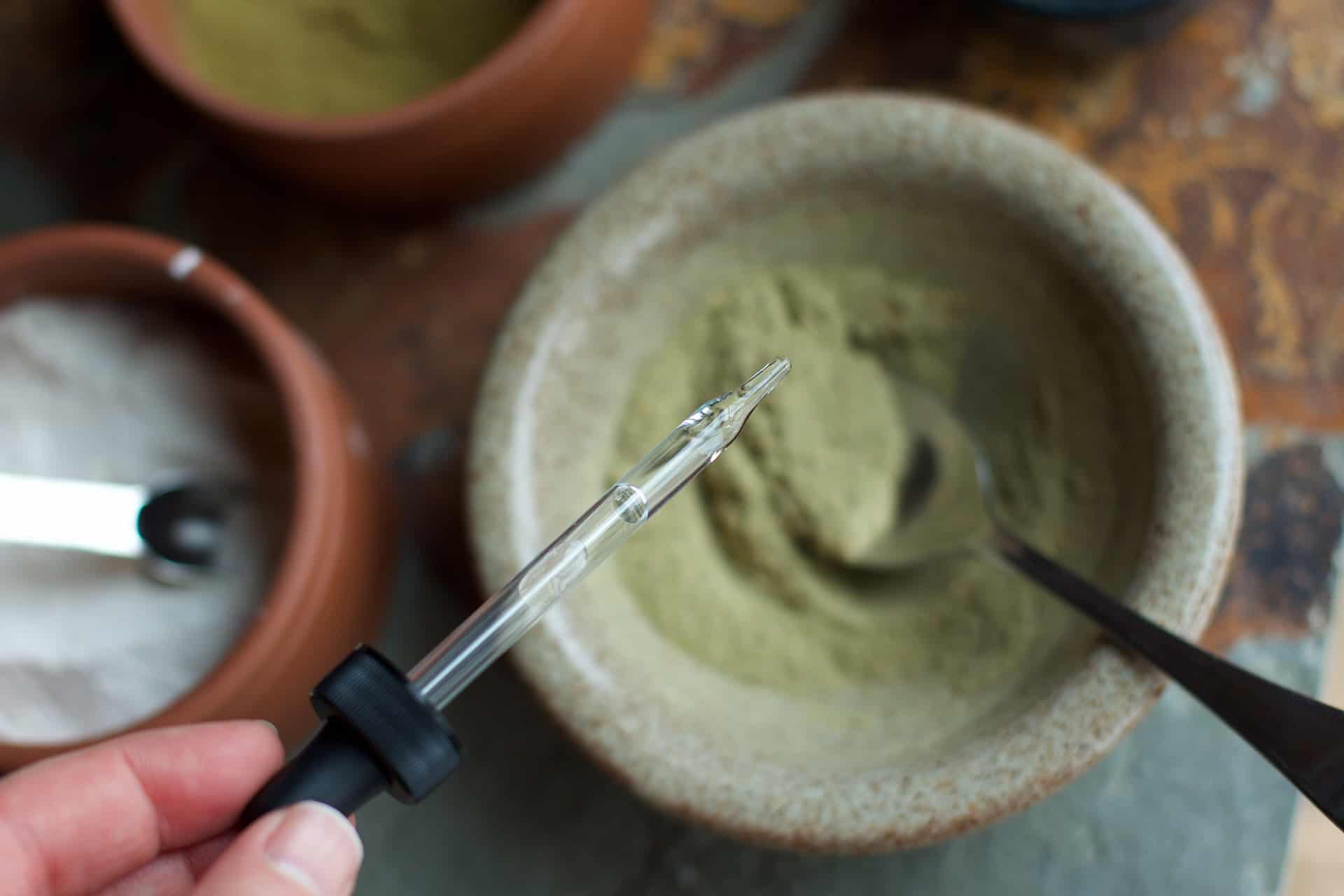
- Slowly add water to the mix. I add about 5 to10 drops at a time.
- After each addition of water, use the back of a spoon to mash the powder and the water together. This really isn’t so much of stirring, more pressing the two substances together. At first the mixture will look crumbly and eventually those crumbles will begin to mash together to form a dough. You’re looking for a fairly dry dough. Just wet enough that it holds together without crumbling apart but definitely not runny.
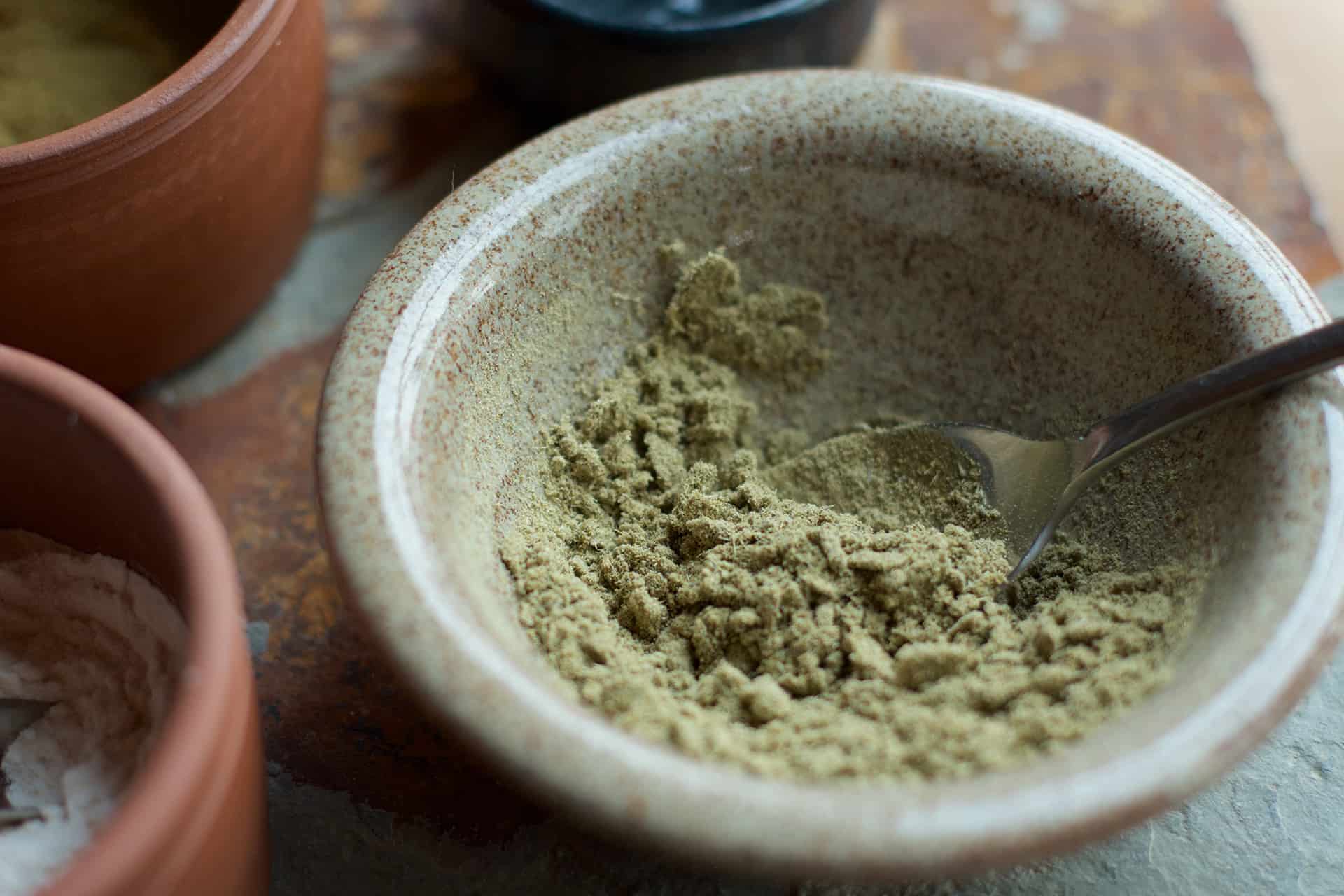
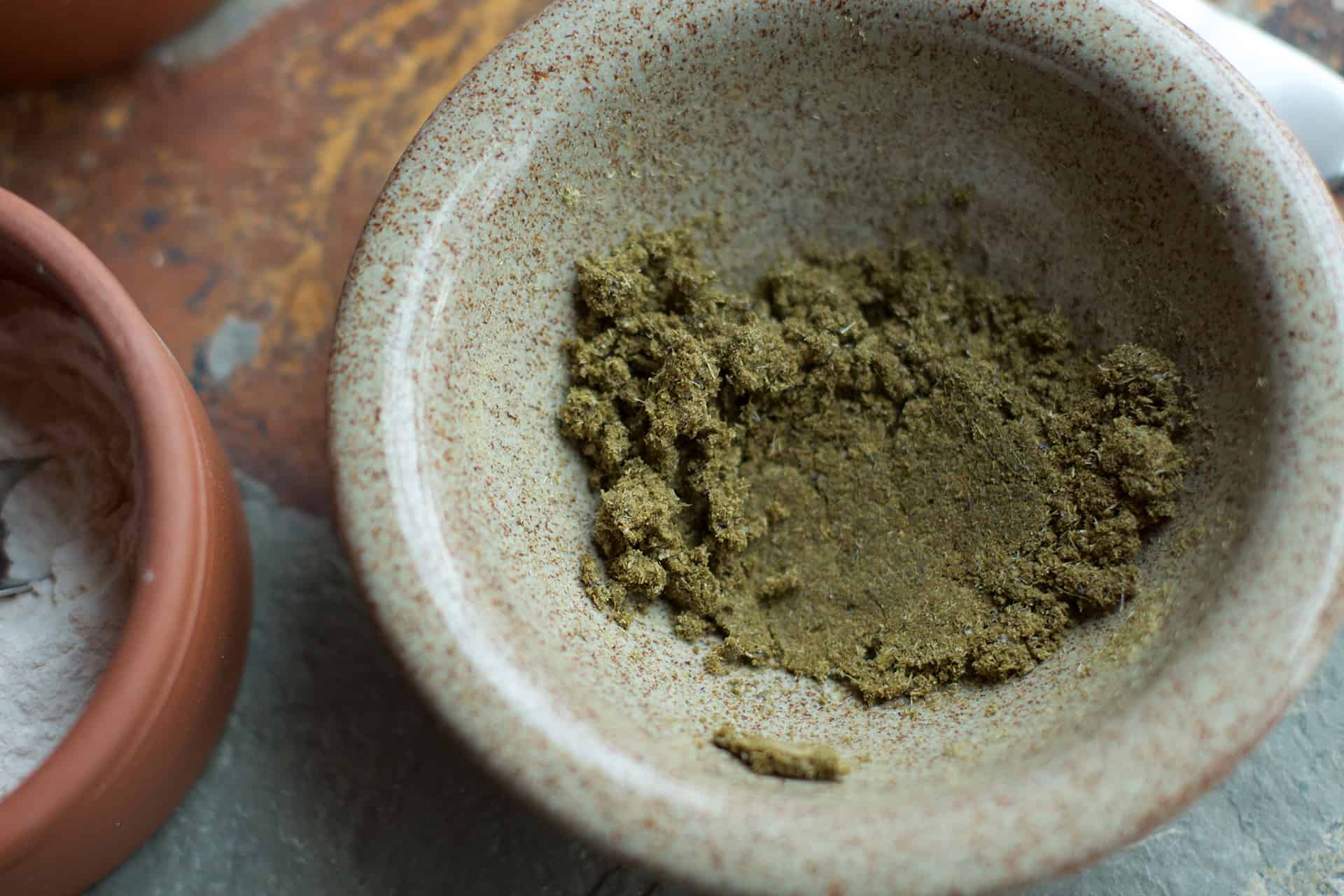
- Once the mixture can hold together, pull off a small pinch and form it into a cone. I’ve found that taller, skinnier cones burn best.
- Set the cones on a flat surface and allow them to dry for about 5 to 7 days. I live in a very arid climate and it still takes that long before they burn well. If your cones aren’t burning well and they are still fairly fresh, then give them a few more days to dry.
- To burn a cone, light the tip with a flame. Allow it to burn slightly until the tip burns red and it’s smoking freely. Place your burning cone on a fire-safe surface.
Yield: 10 to 12 small cones
Want some more ideas? Here are a couple more recipes for you to try out and learn how to make incense. Incense recipes are very forgiving; as long as you know the plant is safe, experiment and see what meaningful and local-to-you blends you can create.
Tree Incense
- 2 teaspoons cedar needle powder (Thuja plicata)
- 2 teaspoons Douglas-fir needle powder (Pseudotsuga menziesii)
- 1 teaspoon juniper berry powder (Juniperus communis)
- 1 teaspoon marshmallow root powder (Althaea officinalis)
Aromatic Shrub Incense
- 2 teaspoons rosemary powder (Salvia rosmarinus)
- 1 teaspoon juniper berry powder (Juniperus communis)
- 1/2 teaspoon marshmallow root powder (Althaea officinalis)
Now I’d love to hear from you!
Do you burn incense?
Do you use incense from herbs found near you?
Please share in the comments below.


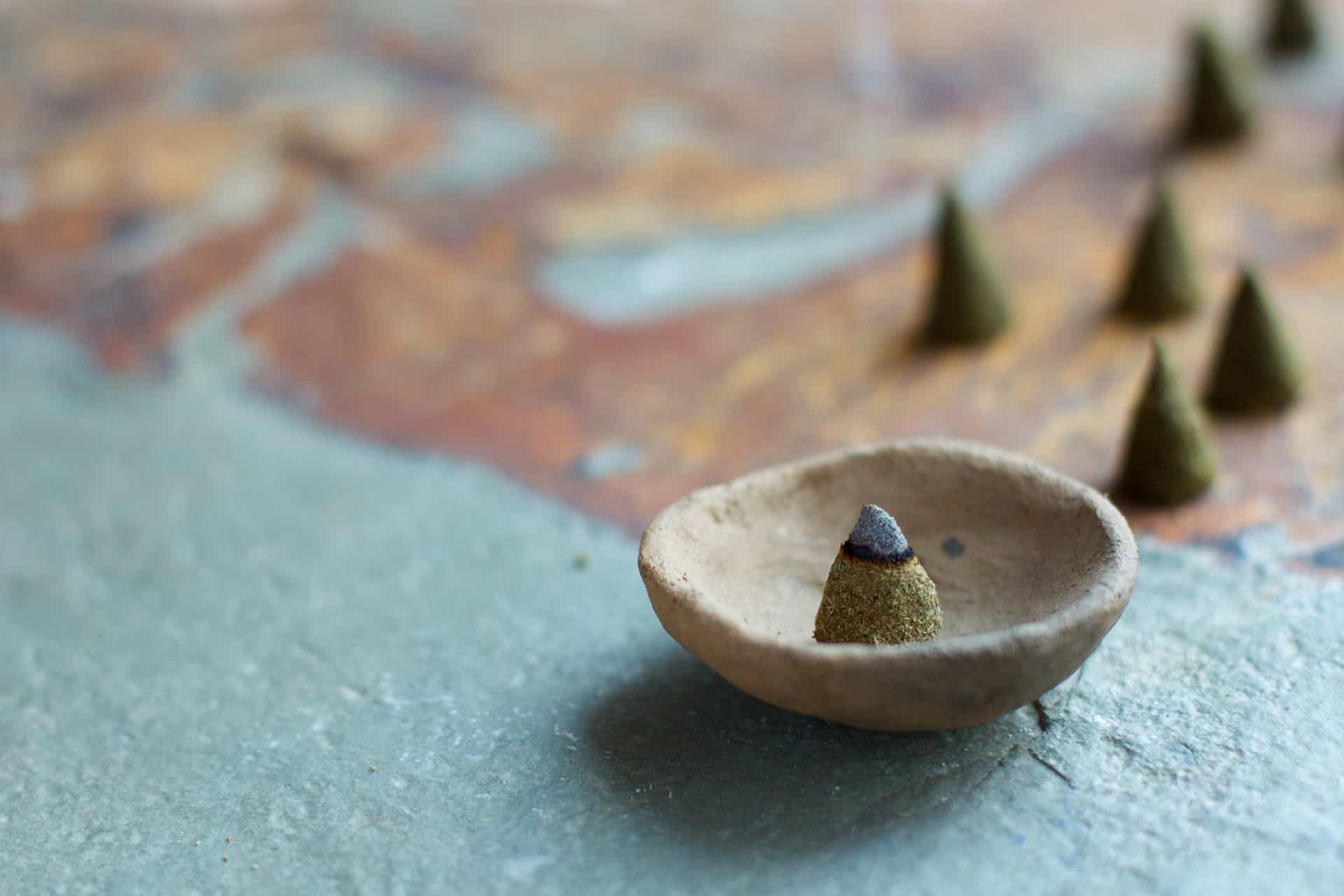

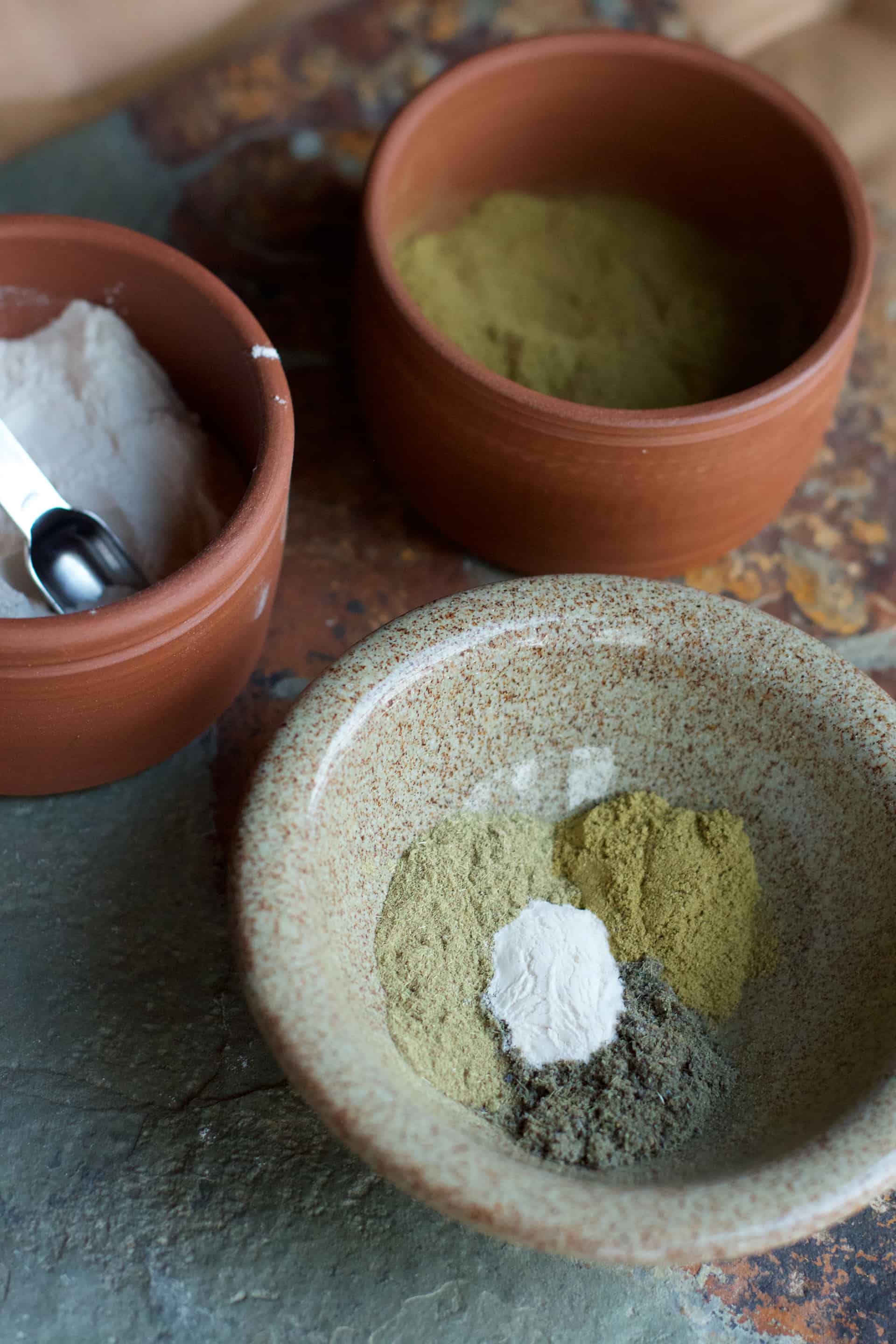

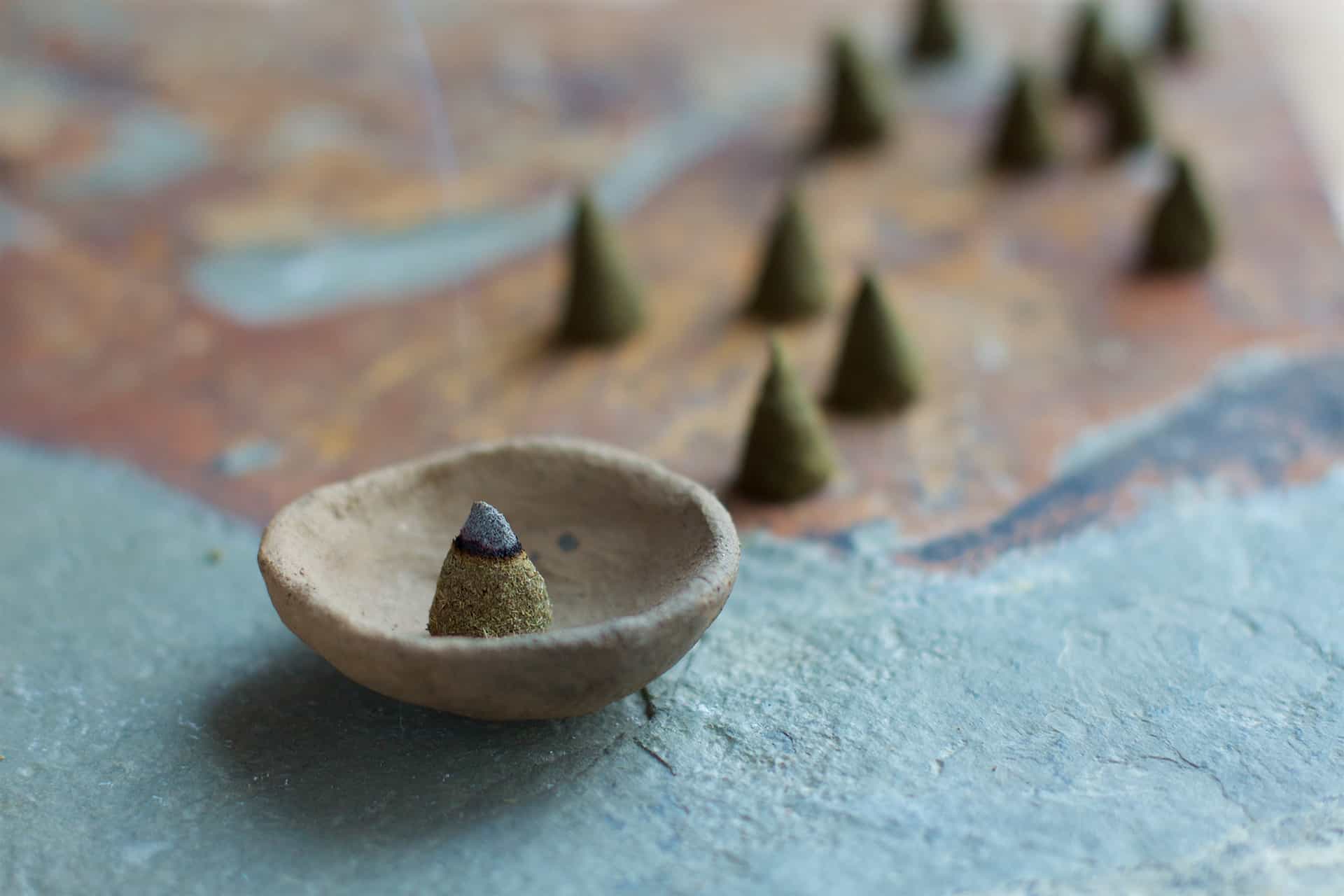

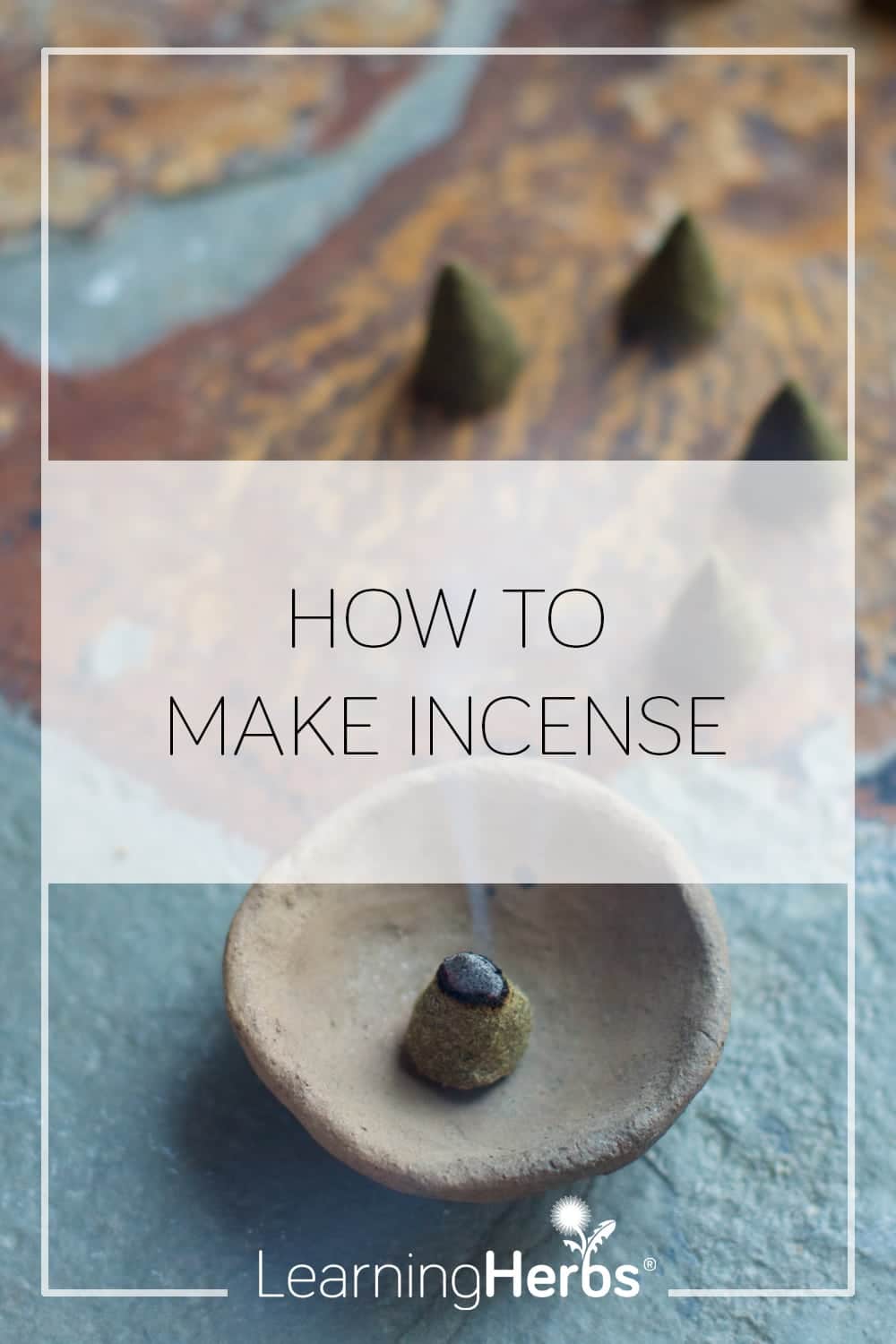


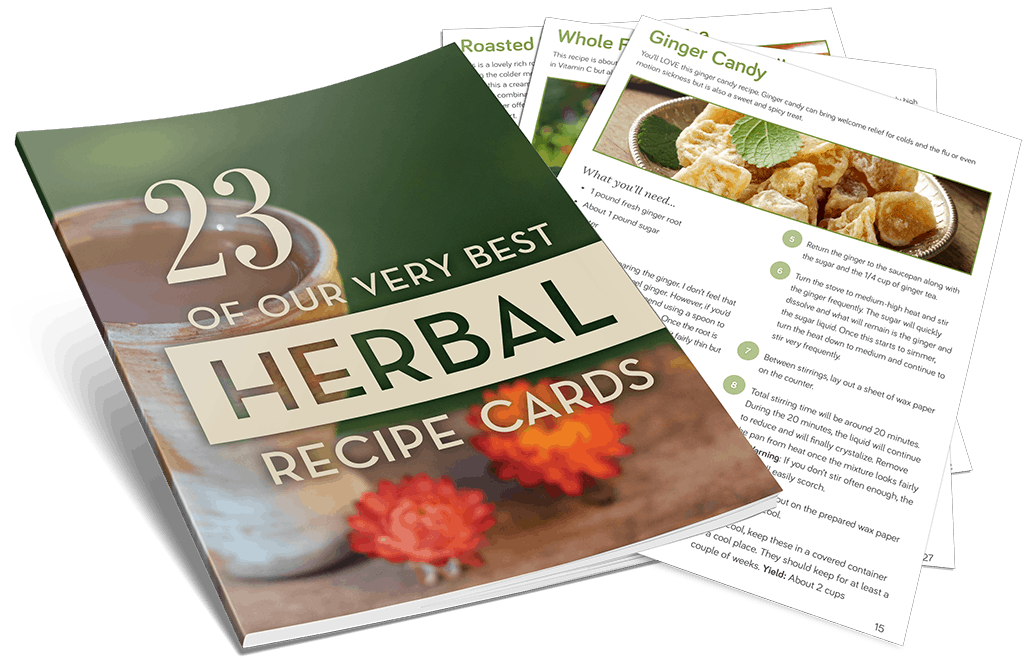


Thank-you for this. Can’t wait to try it!
So what’s the best way to get a plant down to a powder?
If you are harvesting a plant, you can dry it in a single layer until it is fully dry. You can also buy dried herbs. Then, use a mortar and pestle or a coffee grinder to get it into powder form. Enjoy!
I use a dehydrator and then a coffee grinder. :)
do you have any easy suggestions for the process of taking your garden plants from the garden and arriving at a dried powder?
If you are harvesting a plant, you can air dry the leaves (for example) in a single layer until they are fully dry. Then, use a mortar and pestle or a coffee grinder to get it into powder form. Enjoy!
What a great idea to use up some of my leftover 2016 or 2017 harvest. I powder up herbs in my herb designated coffee grinder. These would make lovely gifts and a great project to do with my grand daughter. Thank you.
Lovely idea to honor your remaining herbs, Marsha.
Thanks so much! It sounds like I can dry, grind and burn any of my home grown plants. Are there any plants that I should not burn as an incense? (not because they’re endangered, just asking about the safety of easily grown or found plants) Just want to make sure to avoid any that are harmful to our health to burn. Thanks again!!
I would like to hear an answer to this question as well. If someone has a reaction to ingesting juniper berries how safe would it be to burn juniper? Are there plants that are unsafe in general to burn, or is it as simple as not burning plants that cause a reaction for someone in the household?
Burning certain essential oils are harmful to your felone friends. If you have cats, be sure to check them on the internet.
You’ll want to avoid toxic plants, such as poison ivy, of course.
I wouldn’t use plants that anyone in the house is sensitive to.
As for our feline friends, as long as they can escape the room at will, they are quite adept at avoiding things unsuitable for them.
Thank You i have been wanting to do this for a long time
Wow! This is amazing! Thank you!
Hi- I am under the impression that marshmallow root is being overused at the moment. Do you have another recommendation for resin or demulcent to use instead?
Becky, I think you might be thinking of slippery elm bark? Marshmallow is fairly easy to grow in any garden. I just harvested the roots from my own plant last year. :)
Brilliant. What a great idea. Thank you Rosalee!
Fun! Question… could Common Mallow Root be used in place of Marshmallow Root for the binder?
Cant wait to try my hand at these! <3 Thank you!
In theory, it should work to use common mallow. Demulcent herbs are used to bind, Rosalee quoted, and Common mallow (Malva neglecta) is quite Demulcent. It is readily available in my yard, here in Western Washington, so I have used the whole plant interchangeably as I would Malva Althaea.
Thank you for your response! I also have it all over my yard… it would be fun to gather everything from my surroundings! Good to know about the interchangeability of the mallows!
Thank you for this.
Rosalee you are wonderful! I’m so excited to make incense. I have a question??? I dried lilac flowers last spring. Do you think I could I use them in an incense cone?
I have no idea if lilac flowers would be a good thing for cone incense. I’ve never tried it. Let us know if you do!
Love this idea. Will be fun to do with the children I work with. Thank you!
Sounds like a Wonderful Idea. My hubby loves Incense. I have a question though. I have a serious sensitivity to smoke. Is there some part of this product to be as smoke free or allergy free as possible?
Sounds like this isn’t the recipe for you as it definitely will smoke. If you are interested in using herbs for bringing a natural scent to your home you might look into potpourri.
What can I use as a substitute for marshmallow root?
In the article, Rosalee mentions:
A botanical gum, demulcent, or other substance to glue the powders together
Common mallow (Malva neglecta) is a demulcent herb that may work. That is growing everywhere around me right now, so is very easy to find!
Below, Rosalee mentions Acacia/Gum Arabic powder and says it works great.
Have fun!
I absolutely adore how you spread the awareness of the fact that some store-bought products (which might be no more than a whim to some people) come at a cost! You, Rosalee, and John make my heart flutter by bringing in a number of my concerns over the flaws in our livestyles. It is great to realize that most of what we need and desire is available in our backyard in abundance. I have been using dried herbs and resins as incense before, but this idea with powders is new to me and I look forward to experimenting with my herbs even more.
Lovely and inspiring, thank you Rosalee, I will try this with our homeschooling group! Being in South Africa, I’m not sure where to get marshmallow root but can find various resins quite easily. How would you get the resin to stick the powders together, I assume warm it gently (and omit the water)??
See if you can find Acacia/Gum Arabic powder. It works great and may be more readily available.
thank you as always you are a true inspiration. I go to your site almost daily .
I’ve attempted the exact same method with most of these ingredients. it DOESN”T BURN. I have used up more matches than incense trying to get a good burn. Leaving them to dry even for for months doesn’t work. What is happening?
Hmmm… I’m not sure. I’ve made cone incense for years and it generally burns well. I’ve had a few duds that didn’t burn great and my best guess was they they were too fat. The taller skinnier cones seem to burn best. Also if you live in a very humid environment that could also play a role.
THANK YOU Rosalee for this article. A customer once gifted me some handmade incense cones and they were the best I’ve ever used. It will take a few days to source some of the materials I need, and I can’t wait to get started. In the meantime though: Thank you!
Thank you so much for sharing! I have wanted to learn how to make these for a while now. have you worked with any other plant besides Marshmallow? I love Marshmallow, just curious?
Oh never mind! I read the above comments ;)
Hi lm rose from AUSTRALIA can l buy marshmallow root from tha health food store. And how would l make incense on sticks thankyou
Hi Rose,
Maybe try calling a few health food stores in your area and see if they carry marshmallow root. It is common and easy to get in the States. You may wish to try a different demulcent herb (or the other options mentioned in the article and comments), if you cannot find it easily in your area.
As for sticks, that’s a great question. I don’t know the answer there, but I imagine some gooey/sticky substance is needed to get the herbs to stick to the stick. LOL It may even require chemicals, I don’t know. That’d be a good research project for you.
Happy herbal adventures!
thank you, sounds like a fun project; good to learn about the over-use of frankincense, will be more diligent in research in future!
Thank you. This looks very simple to make. I am curious if anyone has tried this with a citronella mix to keep mosquitoes away instead of making a citronella candle. Also wondering if lemon balm incense would work to help keep mosquitoes away.
Hello Rosalee, is always exciting to get your great inspirations, I happen to have Tulsi and Hibiscus in powder, hibiscus sabdariffa. I made some research and it’s family of marshmallow, malvaceae, so as I received your mail it was what I have and had a little go, making cones only with Tulsi and Hibiscus, Still drying, I hope is safe to burn, smells really well by now. Have been looking for other homemaking incense and using a botanical demulcent it convinces me most, rather than damar resin which I have at home for my partner’s painting, not sure about burning it, also have some pine resin that I’ve picked and they might me ok, but don´t know about the quantity, have found this link, it might be of interest for someone:
http://jeanne-blog.com/resin-resinoids-gums-eo/
As Robbyn ask about citronella, I think I’ll try with lemongrass Cymbopogon citratus, here in Spain is called caña santa, it might help with mosquitos.
I’ll appreciate your comment about burning Tulsi.
Just wanted to use a bit of the powder I have.
Thank you very much for this great recipe, always much better to do at home.
Much love to you,
Elisabeth
I made the garden incense from your recipe last week It burns nicely and has a good smell.
Actually it dried very quickly. I’m so glad it is that simple to make it and I will for sure make more and experiment with different herbs. At first the “dough” didn’t stick together, so I had to add more water but then I worried it won’t
dry well. But that was not the case at all. It dried perfectly. Thank you very much for this recipe!
Thank you very much..can’t wait to try making my own incense..i am married to Indian guy and incense is a 1st routine in the morning to burn so our house will smell nice..i am using the stick…if u can show me how to make the stick i would appreciate..but if its too much for you…i am sorry..i will definitely try..i grow my own herbs at home..specially summer time…
Ooh I made these and they smell lovely and make my place feel wholesome. Best of all I don’t get little floaty bits of ash everywhere like I do with smudge sticks.
Oh how i’m happy i found this!! Do you think we could use cinnamon, clove and things like this to make incense? Thank you for sharing your technic, will try for sure and probably now I will get marshmallow in my garden :)